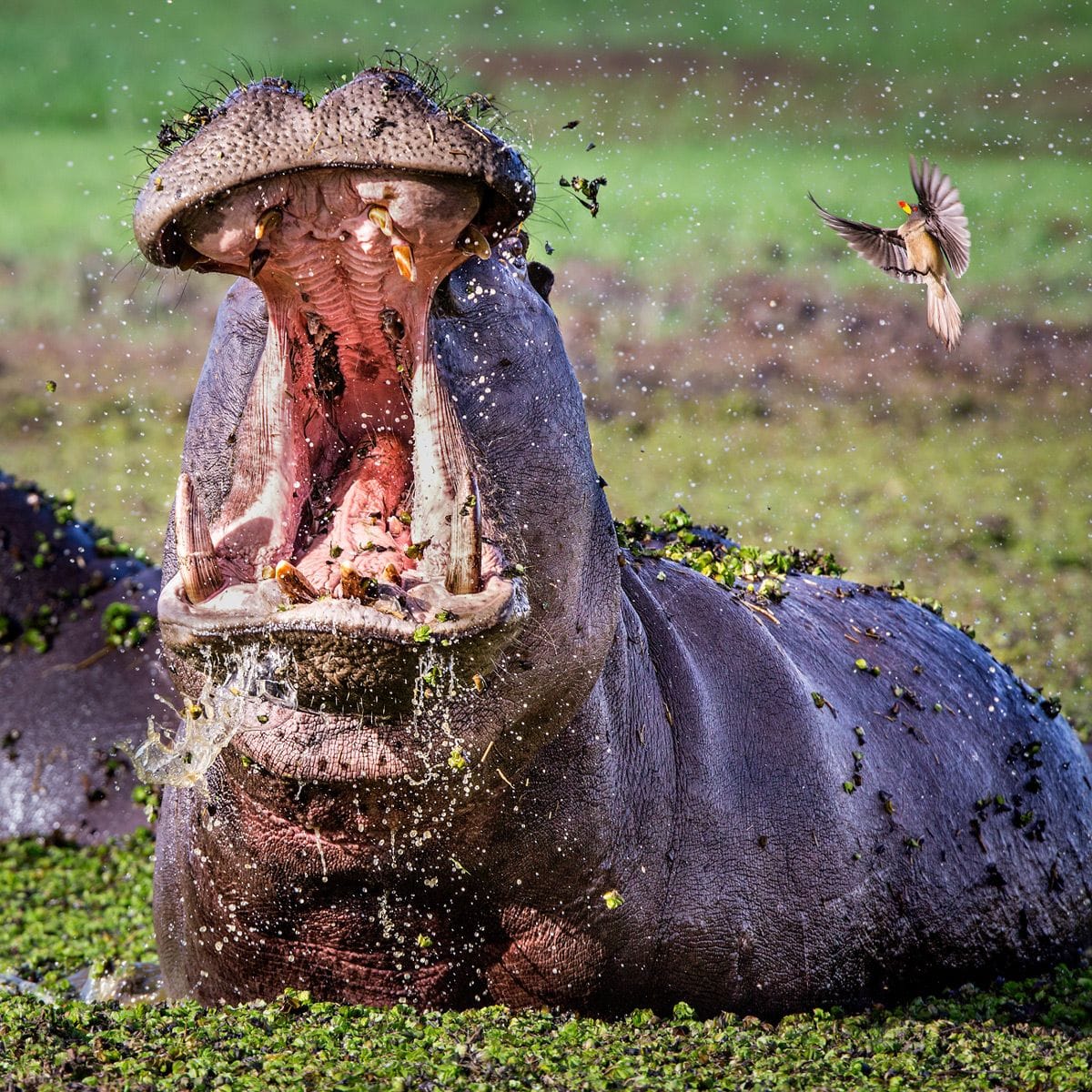The Science Behind Nature’s Gruesome Phenomenon
Okay, let’s address the elephant—or rather, the hippopotamus—in the room. You’ve likely heard the tales of these massive herbivores spontaneously combusting in a spectacle of gore. While the idea of hippos exploding like overfilled water balloons might seem like the stuff of internet legend, the reality is both more nuanced and more disturbing.
Digesting the Afterlife: Decomposition in Overdrive
To understand why a hippopotamus might erupt in such a dramatic fashion, we need to look at the fascinating and often unsettling process of decomposition. When any animal dies, a microscopic army of bacteria gets to work breaking down its tissues. This process, while essential for nutrient recycling in the ecosystem, produces a byproduct we’re all familiar with: gas.
In the case of large mammals, especially those with complex digestive systems like hippos, the sheer volume of internal organs and their contents provides a feast for these bacteria. As they diligently dismantle the deceased hippo from the inside out, they release copious amounts of gases—primarily methane, hydrogen sulfide (that lovely rotten egg aroma), and ammonia.
A Pressure Cooker Under the Sun
Now, imagine this gaseous production happening inside a hippopotamus—an animal renowned for its incredibly thick and tough hide, which can be up to two inches thick in places! This robust skin acts like a surprisingly effective seal, trapping the gasses released by the bacteria. It’s akin to inflating a balloon far past its intended capacity—the internal pressure builds relentlessly.
Add to this the intense heat of the African sun, which further accelerates the decomposition process, and you have a recipe for a rather dramatic pressure release. The hippo’s abdomen, now a morbid pressure cooker, will eventually give way at its weakest point. This is often the belly area, and the result is a sudden and forceful rupture, expelling a wave of pent-up gas, bodily fluids, and partially digested vegetation in a spectacle that’s as visually impressive as it is nauseating.
More Than Just a Macabre Light Show
While the thought of a hippo erupting might elicit a chuckle and a quick mental image of a cartoon, the reality has significant implications for the savanna ecosystem. First and foremost, it presents a potential hazard to scavengers. A lion, drawn by the scent of carrion, might think it’s stumbled upon an easy meal, only to be caught in the blast radius of nature’s unexpected confetti cannon.
Furthermore, the explosion scatters the hippo’s remains over a wide area, potentially impacting nutrient distribution. This dispersal, while messy, plays a role in the circle of life, attracting various scavengers and enriching the soil with organic matter.
Unraveling the Mysteries of Hippo Explosions
Despite the morbid fascination surrounding exploding hippos, much about this phenomenon remains a mystery. Researchers continue to investigate:
- The exact cocktail of gases: While we know the primary culprits, the precise composition and ratios of gases contributing to these eruptions are still being studied.
- Individual variation: Why do some hippos seem more prone to this dramatic end than others? Could factors like diet, age, or underlying health conditions play a role?
- Frequency and impact: How often do hippo explosions actually occur? Are they becoming more or less common? What long-term effects, if any, do they have on savanna ecosystems?
The next time you encounter a headline about a hippo erupting on the savanna, remember: it’s not just a bizarre anecdote. It’s a testament to the raw power of nature’s recycling system and a reminder of the many mysteries that still lie hidden within the animal kingdom.
Why Did Egyptians Fear Hippos?
Today, we might watch nature documentaries and chuckle at the sight of a hippopotamus yawning widely, its enormous mouth a testament to its herbivorous diet. However, the ancient Egyptians regarded these creatures with a more complicated mix of awe and terror. Their relationship with hippos was one of respect, fear, and a recognition of the animal’s capacity for both destruction and nurturing.
The Two Sides of the Hippo: Chaos and Creation
The Egyptians understood the duality of nature, acknowledging both its life-giving and destructive capabilities. This duality was embodied in their perception of the hippopotamus. Male hippos, with their imposing size and aggressive tendencies, were often associated with Isfet—the concept of chaos. They represented the unpredictable, untamed power of the Nile River, capable of both life-sustaining floods and catastrophic devastation.
However, the Egyptians also recognized the protective nature of female hippos, particularly mothers defending their young. This nurturing aspect was personified in the goddess Taweret, often depicted as a pregnant hippopotamus goddess. Taweret was revered as a protector of women and children during childbirth, a symbol of fertility, and a guardian against evil spirits.
Taming the Beast: Royal Hippo Hunts and Ritualistic Control
The pharaohs, eager to demonstrate their mastery over chaos and maintain Ma’at (order), engaged in elaborate hippopotamus hunts. These hunts were not merely about sport or sustenance; they held deep religious and symbolic significance. By conquering these powerful creatures, pharaohs affirmed their authority over the forces of nature, ensuring the safety of their people and the balance of the cosmos.
The importance of these hunts is evident in their depiction in tombs and temples, showcasing the pharaoh’s prowess and the triumph of order over chaos. The Egyptians even extended their attempts to control the hippopotamus’s power into the afterlife. Archaeological discoveries, like the famous “William the Hippo” statuette with its deliberately broken legs, suggest a belief that disabling the animal in this way would neutralize its potential to cause harm or disrupt the underworld.
A Delicate Balance: Humans and Hippos on the Nile
The ancient Egyptians’ complex relationship with hippos offers a glimpse into a world where humans lived in closer proximity—and often in conflict—with powerful animals. Their fear was not unfounded. Hippos could decimate crops, capsize boats, and even kill humans with their powerful jaws. Yet, they also understood the vital role these creatures played in the delicate balance of the Nile ecosystem. The Egyptians’ reverence for Taweret, the hippopotamus goddess of protection, demonstrates their awareness of the animal’s nurturing side.
The fascination with “exploding hippos,” even today, reflects a morbid curiosity about death in the animal kingdom. However, for the ancient Egyptians, the hippopotamus represented something far more profound. It was a living embodiment of nature’s duality, a creature to be both feared and respected, a force that could unleash chaos or safeguard life itself. Their relationship with the hippopotamus reveals a deep understanding of the interconnectedness of all things, a profound awareness of the delicate balance between humanity and the untamed wild.
What Did Fire Do to Hippos?
The relationship between fire and hippos is a destructive one. While hippos are creatures of the water, seeking refuge in rivers and lakes, fire poses a significant threat to their well-being and the habitats they depend on.
Habitat Loss: A Burning Threat
Wildfires, while a natural part of savanna ecosystems, can have devastating consequences for hippopotamus populations. These massive herbivores rely on abundant vegetation near water sources for food and shade. A wildfire can sweep through an area, consuming the grasses, reeds, and trees that hippos depend on. This loss of habitat can lead to starvation, displacement, and increased vulnerability to predators.
Direct Danger: Trapped by the Flames
Hippos, despite their size, are not particularly agile on land. They are ill-equipped to outrun a fast-moving fire. While their thick hides offer some protection from heat and flames, prolonged exposure can lead to severe burns, smoke inhalation, and even death. Hippos caught in a wildfire may panic, becoming disoriented and further endangering themselves. Their instinct to retreat to the water can also prove fatal if the fire blocks their escape route, leaving them trapped between the flames and a shrinking water source.
A Ripple Effect: Ecological Consequences
The impact of fire on hippos extends beyond the immediate danger. As a keystone species, hippos play a vital role in maintaining the ecological balance of their environment. Their grazing habits help control vegetation growth, their dung provides essential nutrients to aquatic ecosystems, and their wallowing behavior creates channels that influence water flow and habitat diversity.
When fire significantly reduces hippopotamus populations, the entire ecosystem suffers. Vegetation may overgrow, altering the delicate balance of plant and animal life. The loss of hippo dung can impact water quality and the intricate food webs that depend on it. The absence of these gentle giants can have ripple effects throughout the savanna, highlighting the interconnectedness of all living things.
Conservation Efforts: Protecting Hippos from Fire
Recognizing the threat wildfires pose to hippopotamus populations, conservationists and researchers are working to mitigate the risks:
- Controlled Burns: Carefully managed, controlled burns can help minimize the risk of large, destructive wildfires by reducing the amount of flammable vegetation.
- Habitat Management: Creating firebreaks and restoring degraded habitats can help slow the spread of fire and provide hippos with safe havens.
- Monitoring and Early Detection: Early detection systems and fire monitoring programs can help alert authorities to wildfires quickly, increasing the chances of successful containment and reducing the impact on wildlife.
- Community Engagement: Educating local communities about the importance of fire safety and sustainable land management practices is crucial in preventing human-caused fires and protecting hippopotamus habitats.
While fire is a natural and sometimes beneficial force in savanna ecosystems, its impact on hippos can be devastating. By understanding the risks and implementing proactive measures, we can help ensure the survival of these magnificent creatures and the delicate balance of the ecosystems they inhabit.
Internal Links:
The era of the films about the Aztecs is considered by many to be one of the most fascinating in history. Famed Indian festival filled with color is known for its vibrant colors and lively atmosphere.












